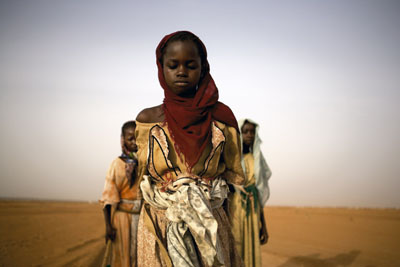
Last night I participated in a panel entitled, "A Conversation between Photography and Policy." Leslie Thomas, Executive Director of Art Works Projects and the curator of the Darfur and Congo Women photo exhibits, moderated. Leslie and Ron Haviv, an award-winning photographer from VII, took us through a brief history of how iconic photos have helped generate or shape public policy responses. Noelle LuSane, Staff Director for the House Subcommittee on Africa and Global Health, talked about how images have at times helped drive Congressional attention and action.
Photos (and other multimedia) can provide a powerful catalyst for change. When combined with clear context and actions, they can focus people on the essential elements of a crisis or human drama and create an avenue for connecting the viewer to the solution, empowering us to act in solidarity. Images are essential to driving social movements and world-changing activism in that they put a human face on the toll of conflict.
“This is fundamental,” says Enough Director of Special Media Projects Robert Padavick. “Concepts like genocide and sexual violence are too often boiled down to numbers; for issues that are complex and foreign to many, it takes the power of images to elicit emotion.”
"This is especially true in the highly media-saturated reality of 2009. The old adage ‘a picture is worth a thousand words’ is only truer in the digital age,” adds Enough Web Producer Zack Brisson. In this way, images serve as icons, aiding us in telling complex stories where words often fall short.
As my colleague Daniel Maree reminds me, we find examples throughout history: Hector Pieterson and the anti-Apartheid movement in South Africa; tank man and the Tiananmen Square protests in China; and, more recently, Neda in Iran.
As John le Carre tells us, “To observe pain only through the prisms of the boardroom and the computer screen is to sever the vital artery between compassion and action.” As the death toll continues to mount in the Congo, Sudan, and other war zones, I am grateful for VII Gallery’s commitment to covering under-reported conflicts.

